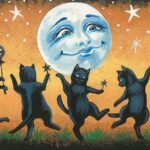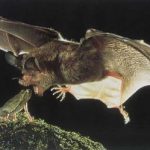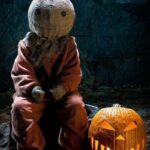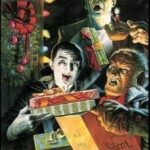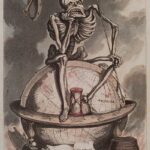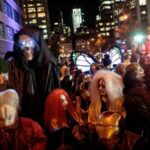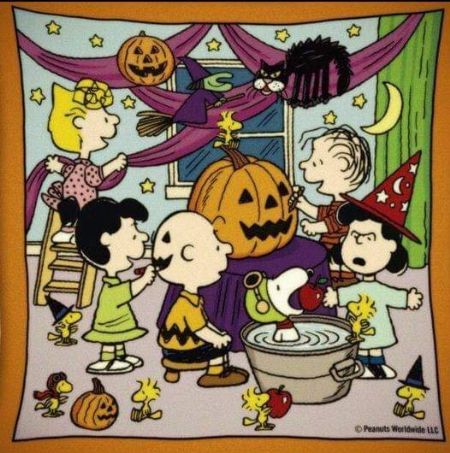
Most Halloween festivities are based on folk beliefs concerning supernatural forces and spirits of the dead. Halloween decorations typically feature imagery associated with supernatural beings such as witches, werewolves, vampires, and ghosts.
Halloween, a time of magic, also became a day of divination, with a host of magical beliefs. Images thought to symbolize bad omens—such as black cats, bats, and spiders—are also commonly featured in Halloween decorations. Elements of the autumn season, such as pumpkins and scarecrows, are also reflected in symbols of Halloween.
Particularly in America, symbolism is inspired by classic film, such as fictional figures like Dracula and Frankenstein’s monster in the vein of Boris Karloff and Alfred Hitchcock. Homes are often decorated with these symbols around Halloween.
Colors
Black and orange are the traditional colors of Halloween. In modern Halloween images and products, purple, green, and red are also prominent.
The use of these colors is largely a result of advertising for the holiday that dates back for over a century. They tend to be associated with various parts of Halloween’s imagery.
Color Symbolism
| Color | Symbols |
| Black | death, night, winter, witches, black cats, bats, vampires |
| Orange | pumpkins, jack o’ lanterns, Autumn |
| Purple | night, the supernatural, mysticism |
| Green | goblins, monsters |
| Red | fire, blood, evil |
Apples
The idea behind ducking, dooking or bobbing for apples seems to have been that snatching a bite from the apple enables the person to grasp good fortune.
Ducking for apples was a marriage divination. The first person to bite an apple would be the first to marry in the coming year. Apple peeling was a divination to see how long your life would be. The longer the unbroken apple peel, the longer your life was destined to be. In Scotland, people would place stones in the ashes of the hearth before retiring for the night. Anyone whose stone had been disturbed during the night was said to be destined to die during the coming year.
Cats
In ancient religions, black cats were considered to be reincarnated beings with the ability to divine the future. During the Middle Ages it was believed that witches could turn themselves into black cats. Thus when such a cat was seen, it was considered to be a witch in disguise or a familiar, resulting in many black cats being thrown into fire. The throwing of cats into a bonfire used to be a folk custom in France, Switzerland and Belgium and was done on St. John’s Eve in June. The custom was abolished by King Louis XIV in 1648, though it continued in the provinces until as late as 1796.
More about familiars
Bats
Celtic mythology saw the bat as an omen of death, misfortune, and trickery, and often, they were symbols of shapeshifters, ghosts, and fairies. Some beliefs suggested they were related to witches; if they came too close to a person, they marked them for ‘eternal damnation. ‘ By some accounts, the ancient Scandinavians also viewed the bat as a supernatural being who could be harbinger of death.
Fire
It was believed by the Celts that on the night of 31st October, ghosts of the dead would walk again amongst them, and large bonfires were lit in each village in order to ward off any evil spirits. All house fires were put out and new fires lit from these great bonfires.
To the Celtics, the bonfire represented the sun and was used to aid the Druid in his fight with dark powers. The term bonfire comes from the words “bone fire,” literally meaning the bones of sacrificed animals, sometimes human, were piled in a field with timber and set ablaze. This practice of burning humans was stopped around 1600, and an effigy was sometimes burned instead.
Legends tell us that on this night, all the hearth fires in Ireland were extinguished, and then re-lit from the central fire of the Druids at Tlachtga, 12 miles from the royal hill of Tara.
Householders were levied a fee to relight their holy fire which burned at their altars. The extinguishing of the fires symbolized the “dark half” of the year, and the re-kindling from the Druidic fires was symbolic of the returning life hoped for, and brought about.
Spiders
These arachnids have become part of Halloween imagery because of their connections to witches as well as abandoned haunted houses. Witches were thought to invite spiders into their homes as pets, companions or for use in potions.
Their ability to weave webs has long been symbolic of time, fate, progress and the representation of the human journey (on both physical and philosophical levels). Also, the spider boasts eight legs, and the number eight is symbolic of cycles which relates to the transition between season of Halloween.
Pumpkins
Pumpkins at Halloween are called ‘Jack O’Lanterns’ in English, after the legend of Stingy Jack. Pumpkin lanterns were first mentioned in English texts in 1837, and began to be used during Halloween celebrations from 1866.
The pumpkins are lit with candles, they are easy to hollow out and cut patterns into. Particularly common carvings are creepy faces that are said to scare away dark powers.

